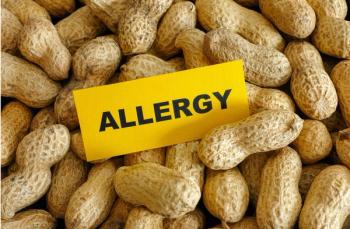
New Data Highlight Social, Racial Disparities in Flu, COVID-19, RSV Vaccine Uptake
IDWeek 2024: Black individuals were less likely to be vaccinated against all 3 respiratory viruses than White individuals, according to new research.
Vaccination rates for influenza, SARS-CoV-2, and respiratory syncytial virus (RSV) each remained below 50% in the US between 2023 and 2024, according to new research that will be presented at IDWeek in Los Angeles, CA (October 16-19, 2024).1
Researchers also reported that Black individuals were less likely to be vaccinated against all 3 respiratory viruses than White individuals, even when residing in similarly disadvantaged neighborhoods.1
“US vaccination rates fall short, with social vulnerabilities hindering access to preventive care,” presenting author Elie A. Saade, MD, MPH, medical director of infection control and quality at University Hospitals of Cleveland, and colleagues wrote in the study abstract.1
The low vaccination rates in the US may be influenced by socioeconomic status, vaccine hesitancy, access barriers, and racial disparities, according to Saade and colleagues. To examine the association between social vulnerability, race, and vaccine uptake, they analyzed data from 341 029 patients who were diagnosed with acute respiratory infections at University Hospitals of Cleveland between October 2023 and April 2024.1
Patient demographics and vaccination statuses were collected from health records and matched with data from the US CDC’s Social Vulnerability Index (SVI), which looks at socioeconomic status, household characteristics, race/ethnicity, and housing and transportation as factors that impact health. Researchers then geocoded and segmented the data into quartiles, with Q5 being the highest SVI category and Q1 being the lowest.1
Among the cohort, 60% were women and 81% were White, according to investigators. Black individuals were overrepresented among individuals in SVI Q4 at 37% and underrepresented among the least vulnerable population (ie, Q1) at 3.2%, despite making up 14% of the study’s population.1
Vaccine uptake among all participants regardless of SVI quartile and race was 37% for influenza, 14% for SARS-CoV-2, and 8.8% for RSV. Vaccination rates decreased, however, as the SVI quartile increased, particularly among Black people, according to the abstract.1
After investigators adjusted for age, sex, and race, they found that the odds of receiving an influenza vaccine were lower for Black individuals compared to White individuals in all SVI quartiles, with the greatest disparity in SVI Q5 (Black: prevalence ratio [PR] 0.59, 95% CI 0.57-0.61; White: PR 0.72, 95% CI 0.70-0.75). Similarly, they also reported that the odds of receiving a SARS-CoV-2 vaccine and RSV vaccine were lower for Black individuals compared to White individuals across all SVI quartiles.1
Saade and colleagues also noted that emergency visits for acute respiratory illnesses increased while primary care visits decreased with higher SVI quartiles.1
“Even when controlling for demographic factors, household income, health insurance coverage and geographic location, the study’s findings maintain that neighborhood factors and race are significantly associated with vaccination status against common respiratory viruses,” Saade said in a press release.2 “Disparities this vast are not to be overlooked — they require multifaceted interventions that meet people where they are socially and increase access to essential preventive measures.”
References:
- Albar Z, Ladikos C, Tisch DJ, Salata R, Saade E. Social determinants of vaccine uptake: The impact of race and vulnerability on influenza, SARS-CoV-2, and RSV vaccination rates. Abstract presented at IDWeek 2024; October 16-19, 2024; Los Angeles, CA.
- Black individuals less often vaccinated against influenza, SARS-CoV-2, RSV than Whites. News release. Infectious Disease Society of America. October 16, 2024. Accessed October 17, 2024.
https://www.idsociety.org/news--publications-new/articles/2024/black-individuals-less-often-vaccinated-against-influenza-sars-cov-2-rsv-than-whites
Newsletter
Enhance your clinical practice with the Patient Care newsletter, offering the latest evidence-based guidelines, diagnostic insights, and treatment strategies for primary care physicians.

















































































































































































































































































